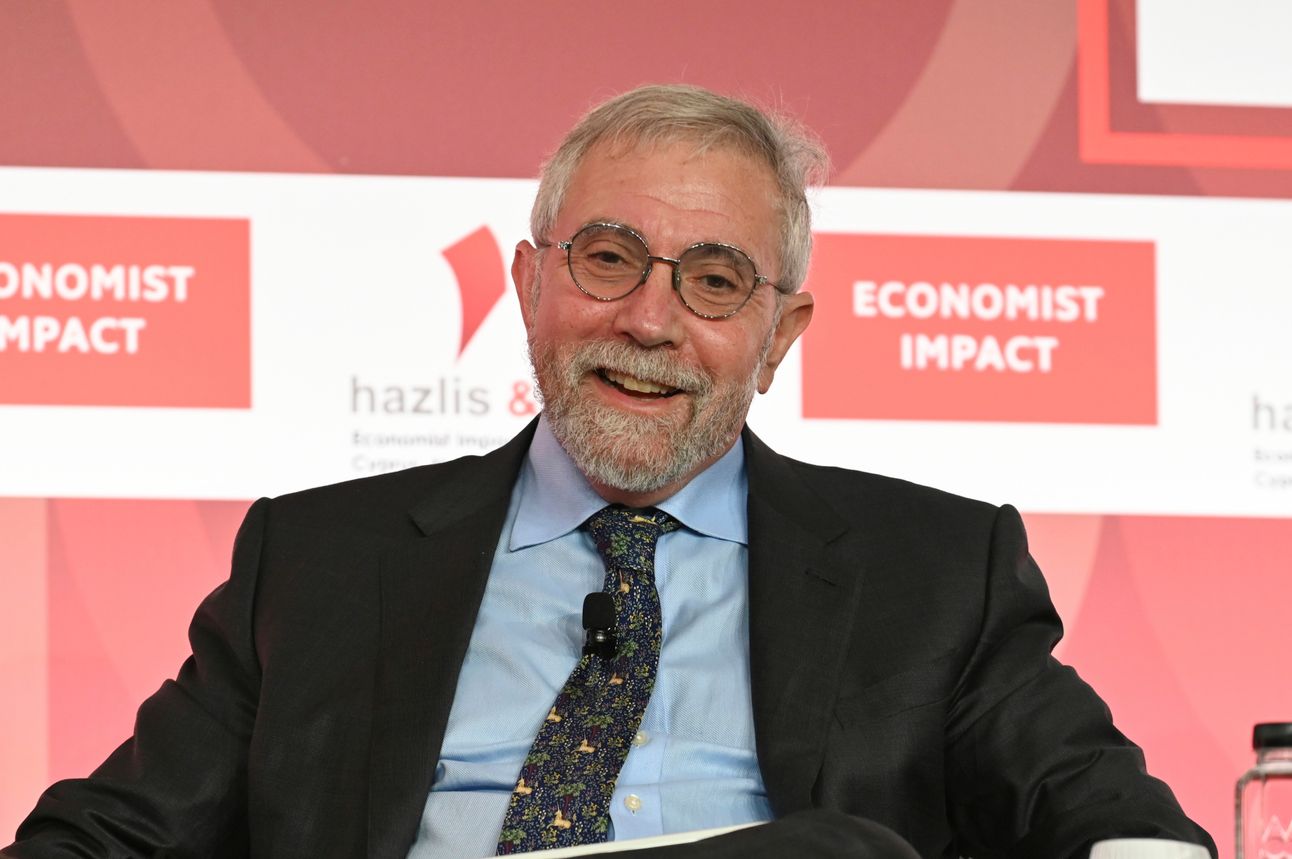- Disruption Now's Newsletter
- Posts
- The New York Times Is Wrong on AI
The New York Times Is Wrong on AI
Eight Reasons the New York Times Is Wrong on AI—& Why It Matters

“By 2005 or so, it will become clear that the Internet’s impact on the economy has been no greater than the fax machine’s.”
History is littered with confident experts making wrong calls—the kind of takes that age like milk in a sauna. The New York Times just poured itself a fresh glass—and raised a toast.
 Paul Krugman On May 16, the Times claimed AGI is a “distant fantasy” and today’s systems are merely “statistical parrots” delivering no real innovation or productivity. | They’re not just mistaken—they’re profoundly wrong. And the proof isn’t speculative. It’s already here. From life-saving drugs to industrial optimization and materials science, AI is quietly transforming the way we invent, build, and solve. These eight breakthroughs offer evidence that today's AI is not only real—it’s reshaping the world. |
1. AI Invents Algorithms Humans Never Found
Proof: DeepMind’s AlphaDev discovered new sorting algorithms up to 70% faster than previous human-coded routines. These are now used in the LLVM C++ library.
Why it matters: Every compiled program—from smartphones to satellites—just got a speed upgrade. That compounds across the entire software ecosystem.
Start learning AI in 2025
Keeping up with AI is hard – we get it!
That’s why over 1M professionals read Superhuman AI to stay ahead.
Get daily AI news, tools, and tutorials
Learn new AI skills you can use at work in 3 mins a day
Become 10X more productive
2. AI Is Already Delivering Lifesaving Drugs
Proof: MIT researchers used deep learning to discover halicin, a potent new antibiotic lethal to drug-resistant bacteria.
Why it matters: With over 1.2 million people dying annually from resistant infections, AI isn’t just theoretical—it’s life-saving at scale.
3. AI Creates Materials Humans Never Imagined
Proof: DeepMind’s GNoME predicted 2.2 million stable crystals; Berkeley Lab’s A-Lab synthesized 41 in just 17 days.
Why it matters: Faster paths to better batteries, solar panels, and carbon-negative cement mean real progress for the climate and clean energy.
4. AI Redesigns Hardware in Weeks, Not Years
Proof: NASA’s Evolved Structures pipeline produces lighter, stronger titanium parts in under 3 weeks.
Why it matters: What used to take years now takes days. That’s a revolution for aerospace, medical, and defense industries.
5. AI Delivers Hard-Dollar Gains in Logistics
Proof: UPS’s ORION AI cuts 100 million miles, 10 million gallons of fuel, and saves $300–$400M annually.
Why it matters: AI isn’t just hypothetical—it’s on the balance sheet.
6. AI Turbo-Charges Knowledge Workers
Proof: GitHub Copilot speeds up coding by 55%. An NBER study found a 14% productivity gain in call centers—34% for novices.
Why it matters: AI raises the floor, lifts teams, and closes skill gaps.
7. AI Already Thinks in Pictures and Words
Proof: GPT-4V can solve handwritten math from photos and integrate visual + textual reasoning.
Why it matters: Real-world utility: accessibility tools, field diagnostics, automated form reading. It’s here—and it works.
8. AI Teaches Robots on the Fly
Proof: DeepMind’s RT-2 lets robots generalize from language to action—like choosing an object that can serve as a hammer.
Why it matters: AI is stepping off the screen and into the physical world. That’s not future fiction—it’s engineering reality.
My Disruptive Take
Artificial Intelligence is far from perfect. It's brittle in some contexts, biased in others, and still evolving rapidly. No technology should be seen as infallible, and AI is no exception.
But dismissing it as unproductive or non-innovative? That’s not just wrong—it’s dangerous.
The New York Times claims there’s been no meaningful productivity gains. That AI hasn’t changed science. That it’s just “statistical parroting.” That’s a narrative still looking in the rearview mirror.
The truth? The next five years will look nothing like the last fifty. And those waiting for “AGI” to believe in the power of AI are already behind.
Our institutions—schools, unions, governments—aren’t ready for the disruption that’s coming. Either we shape it or get shaped by it.
When the media downplays or misrepresents AI’s actual capabilities, it undermines the urgency with which policymakers, educators, businesses, and the public should be preparing for its impact.
We need an informed media and an engaged public to navigate this next era. AI is already transforming the nature of work, society, and possibly what it means to be human.
Ignoring that reality doesn’t make us safer. It just leaves us unprepared.
Keep disrupting.
Sources
https://deepmind.google/discover/blog/alphadev-discovers-faster-sorting-algorithms/
RT-2: New model translates vision and language into action
deepmind.google/discover/blog/rt-2-new-model-translates-vision-and-language-into-action
https://news.mit.edu/2020/artificial-intelligence-identifies-new-antibiotic-0220
https://deepmind.google/discover/blog/millions-of-new-materials-discovered-with-deep-learning/
https://ntrs.nasa.gov/api/citations/20230016098/downloads/AU%20GD%202023_11_15%20STI.pdf
https://www.bestpractice.ai/ai-case-study-best-practice/ups_saves_10_million_gallons_of_fuel_and_%24100_million_per_year_by_optimising_driver_delivery_routes_that_consider_real-time_traffic_and_weather_information_obtained_from_social_media_and_machine_learning
https://github.blog/news-insights/research/research-quantifying-github-copilots-impact-on-developer-productivity-and-happiness/
https://openai.com/index/gpt-4v-system-card/
